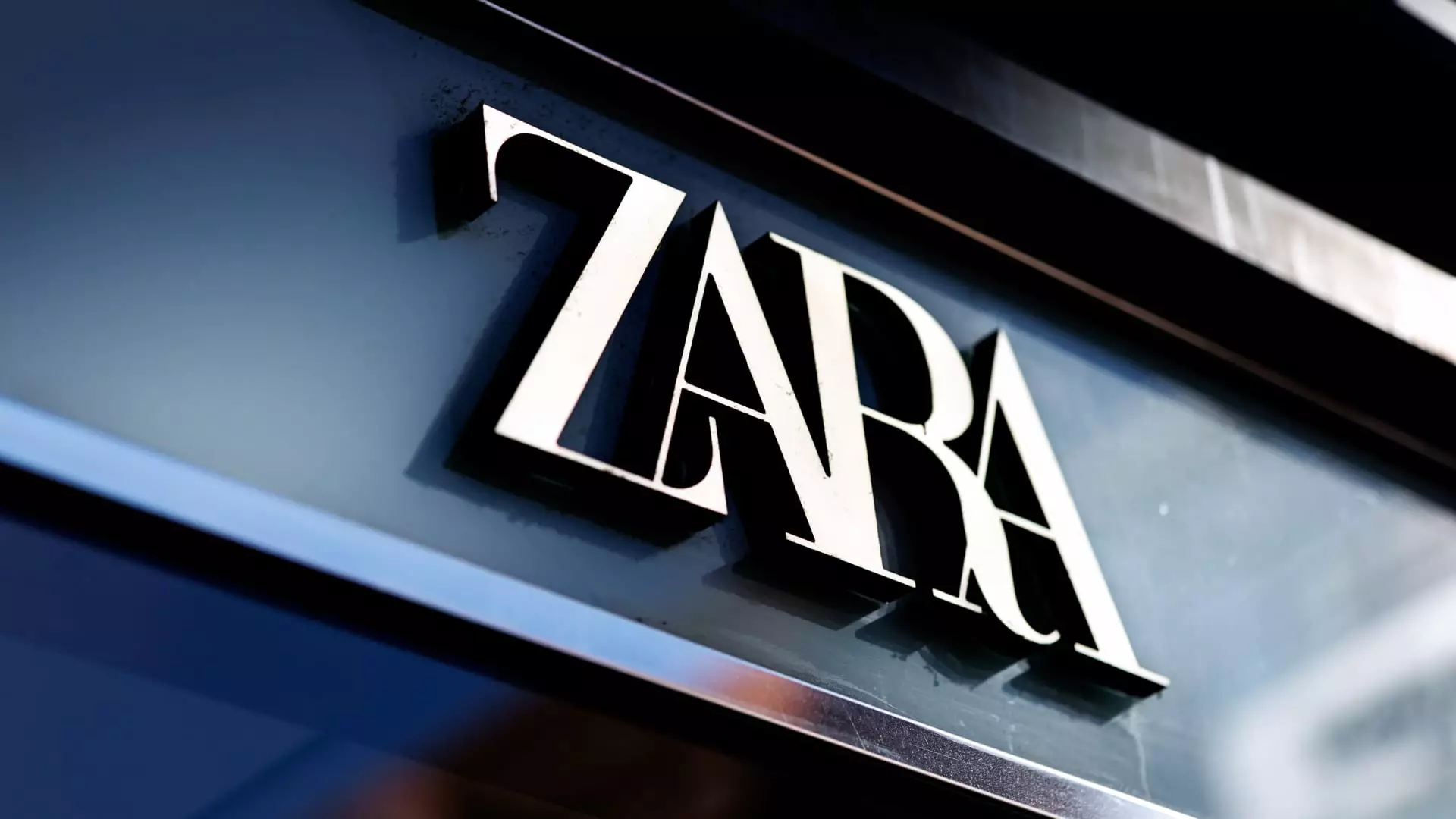Inditex, the company behind the globally adored fashion label Zara, recently faced a troubling downturn in share prices following a disappointing quarterly earnings report. This isn’t merely a financial hiccup; it serves as a stark reminder of the cracks appearing in an otherwise seemingly indomitable retail titan. When Inditex posted sales of €8.27 billion ($9.44 billion) for the fiscal first quarter—a figure falling short of the €8.39 billion anticipated by LSEG analysts—it illuminated more than just lagging numbers; it was a window into shifting consumer behavior as well.
Furthermore, the revelation of a mere 6% increase in summer sales from May 1 to June 9, starkly contrasting the 12% growth during the same timeframe last year, raises a critical alarm. Such a decline suggests that consumers are tightening their belts, a worrying trend as inflation and economic uncertainties loom large. The stark reality is that the fashion retail industry, often thought to be immune to economic fluctuations, is encountering serious headwinds.
The Broader Economic Landscape
Inditex’s disappointing figures don’t exist in isolation. The company is positioned as a barometer of consumer sentiment and a litmus test for the fashion industry at large. With its significant revenue derived from diverse markets, including the lucrative U.S., any fluctuations in consumer spending due to tariffs or economic insecurity can have ripple effects throughout the global economy. The cautious remarks of Gorka García-Tapia Yturriaga, Inditex’s head of investor relations, resonate with an unsettling truth: predicting consumer behavior has become increasingly precarious.
His acknowledgment of the ambiguous impact of current tariffs speaks to a broader worry enveloping many retailers. In a climate where disposable incomes are shrinking, are consumers really willing to turn to fast fashion, even from brands as reputable as Inditex? The answer remains murky, but the sentiment isn’t promising.
Rethinking Growth Strategies
The slump in sales and the shared concerns pointed out by analysts like Mamta Valechha indicate a critical juncture for Inditex and its peers. For every bullish claim about the company’s strong track record, there are bearish voices questioning the sustainability of its growth in this shifting landscape. Can a brand like Inditex, which once thrived during economic booms, remain resilient amid rising competition and shifting consumer priorities?
Inditex’s diverse supply chain, extending across multiple countries from Spain to Brazil, has traditionally provided leverage against localized market downturns. However, this geographic distribution may no longer be foolproof in mitigating the effects of global economic pressures. The fierce competition posed by low-cost fast fashion disruptors like Shein and Temu further complicates matters. It raises an unsettling proposition: will Inditex’s premium positioning and perceived value withstand this relentless margin pressure?
Reflections on Consumer Sentiment
As a self-identified center-wing liberal, I find it hard to dismiss the implications of Inditex’s current predicament. This isn’t merely about corporate profits; it reflects a broader consumer malaise shaped by uncertain economic indicators. If a key industry player like Inditex is facing these hurdles, it suggests that consumers are not just reevaluating their fashion choices; they are reassessing their priorities in spending altogether.
In a world that should ideally encourage creativity and sustainability in fashion, the growing allure of low-cost options could lead to a dangerous normalization of disposable consumerism. While companies like Inditex may find short-term solutions in adapting their business models, the need for a more ethical, conscious approach to consumerism has never been more pressing.
As we watch Inditex grapple with its latest figures, the long-term consequences of these fluctuations will likely resonate far beyond this one brand. How it chooses to navigate this storm of change may dictate the future course of the entire fashion industry. A wind of uncertainty is blowing, and it is crucial for brands to adapt, evolve, and—most importantly—listen to the shifting sentiments of their consumers. The stakes could not be higher, nor the lesson more vital.

